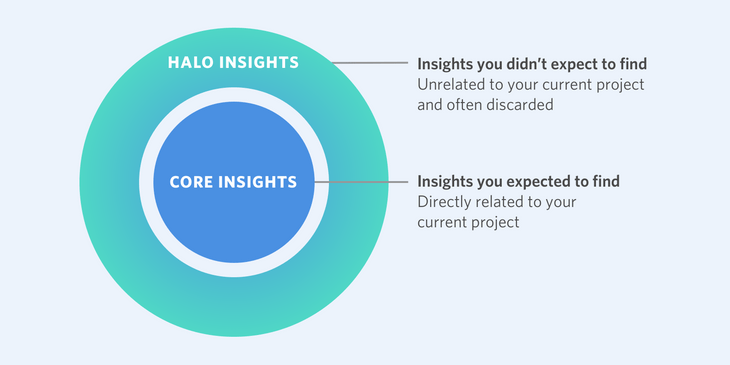Halo insights
 Peter ParkesCo-founder
Peter ParkesCo-founder
When you’re researching one thing, you often learn about something else.
For example, imagine you’re doing a customer research project about dogs, talking to dog owners about how they care for their animals, what they feed them, and where they take them for walks. And let’s call your findings the core insights from this project.
The chances are you’ll also hear things about their other pets. Cats, rabbits, iguanas, beetles and so on.
Some of these things you hear might turn out to be pretty useful. They might spark ideas for new products, services or improvements. They might help solve problems or inspire further research.
These are what I like to call halo insights: the insights just outside of the current project brief, but that could be hugely valuable to another person, team or part of your organization.
The sad truth about halo insights

Very often these halo insights don’t get recorded. If you’re really diligent, you might send an email to the people on the iguana team to let them know about this new reptile feed supplier that people keep mentioning, but the chances are you’ll focus on writing up those dog insights.
This is totally natural. You have limited time and resources. The current priority for your team is dogs. So you focus on the dog stuff.
Where should the halo insights go?
In an ideal world, you’d have a central location to store all this information, shared across teams, so that any potentially useful halo insights don’t get lost.
And don’t worry if they don’t feel ‘big’ enough to be ‘real’ insights. Record them anyway – remember that insights come in all shapes and sizes.
If you don’t keep track of your halo insights, your research programs only operate at a percentage of their true potential. And that spark of inspiration or clever solution might get lost forever.